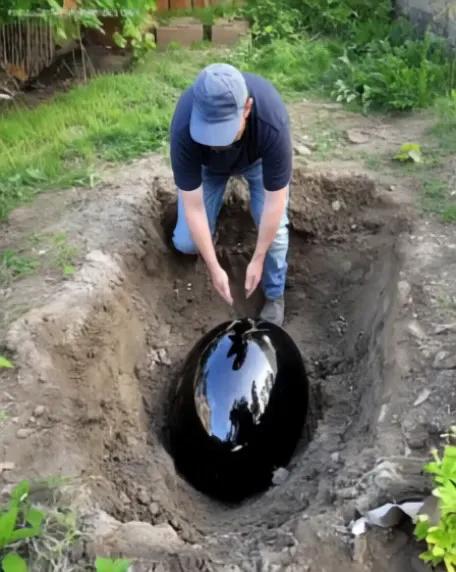After a grueling business trip in Chicago, I decided to skip the final conference events and surprise my husband, Ben. We’d been distant lately, and I missed him. But when I got home, I wasn’t greeted with a smile or a hug — instead, I found him in the backyard, drenched in sweat, digging furiously. Beside him sat a massive black egg, glossy and unnaturally smooth. He jumped when he saw me.
“Regina? What are you doing here?” “I came home early,” I said, trying to stay calm. “What… is that thing?” He panicked, insisting it was “nothing” and begging me to go inside. I didn’t. We argued. He looked terrified. And that night, I couldn’t sleep.
The next morning, after he left for work, I grabbed a shovel and dug it up myself. The egg was hollow — plastic. I cracked it open to find nothing inside, just layers of black casing. It looked expensive, but fake. The mystery deepened when our neighbor mentioned seeing someone sneaking around the garden at night.
Then, the news broke: a counterfeit antique scam targeting collectors was making headlines. Among the items? Black egg-shaped “artifacts” designed to look ancient and valuable. My heart sank. That night, I confronted Ben.

